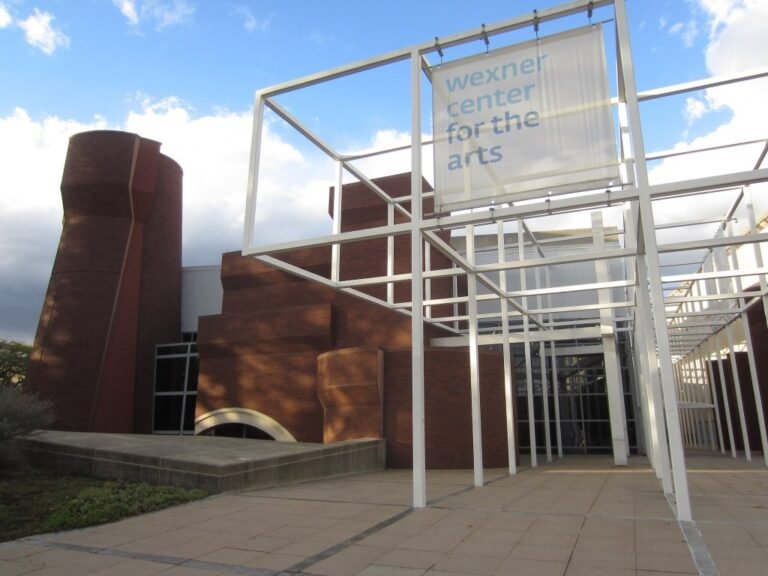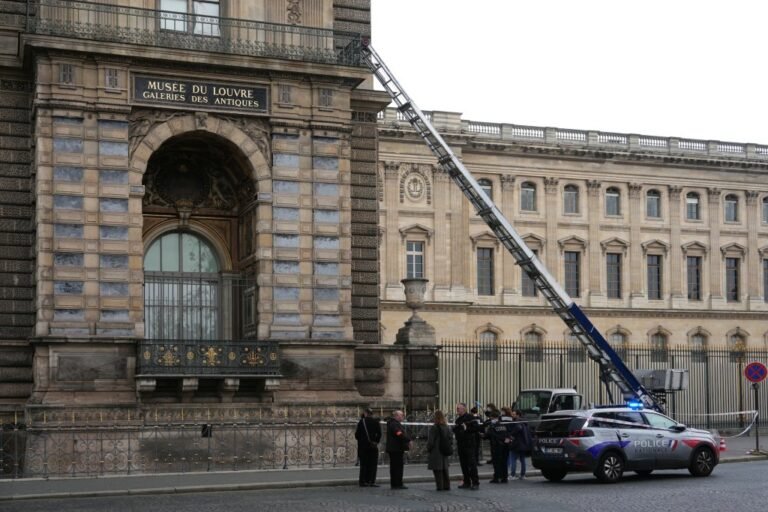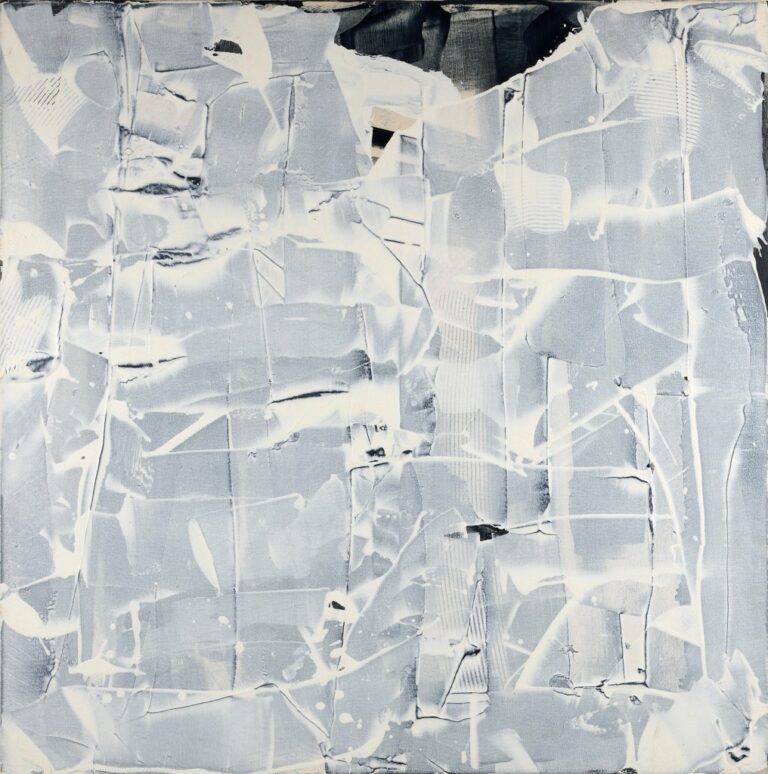

‣ Florence has long been regarded as the birthplace of the Renaissance, but what influence did earlier Byzantine and Eastern European art have on the movement? Martin Gayford explains for the Spectator:
Like quite a few art-historical questions, it goes back to Vasari. Of course, his great book is and was fundamental to our understanding of the Italian Renaissance. Nonetheless, there are many things that he either did not know or got completely wrong.
Vasari makes considerable mention of the ‘Greek style’ (‘maniera greca’), but not in a flattering way. He considered it ‘clumsy’. The first artist whose life he relates is Cimabue. Cimabue’s starting-point, Vasari wrote, was the work of the Byzantine artists operating in Italy at the time, but he ‘added much perfection to the art, relieving it of a great part of their rude manner, [and] he gave honour to his country with his name and with the works that he made’.
‘His country’ was of course Florence, and the life of Cimabue is a crucial element in Vasari’s Florentine-centric view of Italian art. He was vague about non-Florentines such as the Roman master Pietro Cavallini and the Sienese Duccio, getting the latter’s era wrong by about half a century.
So how about those Greeks and their ‘rude manner’? Many examples from the Balkans and the Greek world demonstrate that 13th-century Byzantine art was far from ‘clumsy’ or ‘crude’. At its best, as the frescoes at Sopocani show, it was both innovative and wonderfully accomplished. The Crucifixion at the Monastery of Studenica, which we called at en route, is tenderly poignant and in a new way: the body of Christ sags on the cross, his eyes closed, his expression gently sorrowful. This was painted around 1208. About 40 years later, Giunta Pisano, a leading Italian artist, painted a strikingly similar crucifix for a church in Bologna. Cimabue’s first known work, also of Christ on the cross, has this same pose and mood. So did his later one, badly damaged in the 1966 flood – a work that fascinated and influenced Francis Bacon.
‣ Shinnecock photographer Jeremy Dennis, a former Hyperallergic fellow, spoke with 1202 Magazine about his work in a show focused on water as a medium and material:
The photographs I’m showing are from my Rise series, where I stage scenes on the shoreline—figures submerged, rising out of the surf, or reclaiming the beach as Shinnecock space. On the surface, the images might look eerie or humorous, but that’s intentional. Humor is my way of filtering some cumbersome conversations about belonging, landback, and who gets to control access to water and land.
The Shinnecock have lived with and cared for this coastline for over 12,000 years, but today we have to pay to visit our own ancestral beaches. It’s absurd—and the photographs lean into that absurdity, making the contradiction visible while also affirming our resilience. Not only is humor incorporated as a motif, but fear is also present, in reference to scary movies and popular zombie culture. I refer to ideas of resurgence, a supposed vanished race or invisible people reappearing, and how it relates to Indigenous landback movements such as the Occupation of Wounded Knee and DAPL Water Protectors.
‣ The expansive art and archival collection of the now-shuttered University of the Arts has found a new home, writes Peter Dobrin for the Philadelphia Inquirer:
The UArts records at HSP go back to 1876 and encompass institutions that, over the years, merged into what became the University of the Arts: the Philadelphia Musical Academy, Philadelphia Conservatory of Music, Philadelphia Dance Academy and the Philadelphia College of Art (previously the Pennsylvania Museum School of Industrial Art).
A recent visit to the archive was a walk through the history of the school — and the arts in Philadelphia generally.
Edna Andrade, a Philadelphia proponent of the Op Art movement that used optical effects and illusions, is represented with a sketch of a mural for a Free Library of Philadelphia branch. Modern dance pioneer Nadia Chilkovsky Nahumck appears in a large photograph, and the archive holds the charter of the Philadelphia Dance Academy, which she founded.
‣ The Miami Herald‘s Ben Wieder and Shirsho Dasgupta report on the disturbing disappearance of hundreds of people from “Alligator Alcatraz,” a horrifying sign of the kidnappings and illegal deportations that the government has already been conducting:
Some Alligator Alcatraz detainees who couldn’t be located in the ICE database might have been deported — even though the internal data obtained by the Herald show the vast majority of detainees didn’t have final orders of removal from a judge before entering the facility.
Some of those deportations occurred as a result of detainees deciding to abandon their ongoing immigration cases to put an end to their detention at the facility and its harsh conditions, which included being held in chain-link cages in tents with little protection from the elements.
“It became a game of chicken to see who’s going to blink first, to see if the client’s going to say ‘I don’t want to be detained in these conditions just send me back,’” said Miami immigration attorney Alex Solomiany.
But some immigrants who didn’t want to leave were also deported, even if they still had a legal right to remain.
One of Solomiany’s clients is a 53-year-old man from Guatemala who had been in the United States since 2001.
He was sent to Alligator Alcatraz soon after it opened in July after being stopped by the Florida Highway Patrol in Palm Beach County.
Solomiany filed a motion to be released on bond for the Guatemalan man, who worked as a house painter and is married with children. The attorney showed up for a scheduled hearing at the Krome Detention Center in Miami on Aug. 1 expecting to see his client. That’s when an attorney for the government told him that his client had been accidentally sent to Guatemala instead of being transferred to Krome ahead of the hearing, Solomiany said.
‣ Relatedly, 404 Media is suing over ICE’s contract with a spyware company, a major show of force from the independent publication in the face of attacks on journalism across the board:
ICE signed the contract with Paragon’s U.S. subsidiary in September 2024. Soon after, the then Biden White House put a freeze on the deal as it investigated whether it clashed with a Biden executive order restricting the government’s use of spyware, WIRED reported. At the end of August with Trump in power, ICE reactivated the contract, independent journalist Jack Poulson reported.
The contract itself is for “a fully configured proprietary solution including license, hardware, warranty, maintenance, and training,” according to a description included in a public U.S. procurement database. The funding office for the purchase is listed as a division of Homeland Security Investigations (HSI). It is not clear if the ICE deal is for a custom-made tool or for some version of Paragon’s flagship “Graphite” software.
Graphite is capable of letting police remotely break into messaging apps like WhatsApp, Signal, Facebook Messenger, and Gmail according to a 2021 report from Forbes. While other government spyware tries to take over an entire device allowing all sorts of other capabilities, Paragon sets itself apart by promising to access just the messaging applications, according to Forbes.
‣ Despite those attacks, or perhaps because of them, students in New York City are demanding more robust journalism programs. Jessica Gould has the story for Gothamist:
This fall, 30 new journalism courses launched at city schools, part of an initiative funded by The Revson Foundation and multiple city councilmembers. CUNY’s Craig Newmark School of Journalism is a partner of the program.
Autumn Wynn, a senior at Park Slope Collegiate High School in Brooklyn, said she’s been thrilled to participate in her school’s new journalism elective this semester, which has introduced her to a possible career path.
“ Journalism isn’t only hunching over a desk and writing. Journalism is interviewing, understanding the community, and so much more,” she said. “With this elective going into 30 schools and hopefully more in the future, I hope it inspires another talkative and opinionated Black girl as much as it has inspired me.”
‣ And over at Inside Higher Ed, scholar John K. Wilson writes about Jimmy Kimmel and government censorship as the real “cancel culture” (though it misses that retribution against pro-Palestine organizers was a precursor to what we’re seeing today):
The glorification of Kirk is a cover for an authoritarian agenda to suppress political enemies. Donald Trump immediately celebrated Kimmel’s banishment and called for NBC hosts Jimmy Fallon and Seth Meyers to also be fired.
This is the slippery slope of censorship: First they come for those who celebrate murder, then they come for anyone who questions the hagiography of the victim, then they go after anyone who quotes the victim’s own words, then they silence anyone who objects to the repression itself. This is why even offensive and stupid comments about Charlie Kirk must not be punished.
But when Vice President JD Vance urges everyone to “call their employer” in response to offensive comments, that’s not critique or argument: That’s cancel culture, pure and simple. That’s government-mandated repression.
‣ If you’re an audiobook fiend, read David A. Keeps’s piece on the actors who struggle to get paid fairly for a new understanding of the industry behind the beloved medium. He writes for the LA Times:
“Audiobooks are the darlings of publishing,” says Robin Whitten, founder of AudioFile magazine, which reviews narrator performances. “Listeners who find a voice they like will listen to books they hadn’t considered before because they want that narrator to tell them a story.”
But this bounty isn’t shared by all. Performers such as Julia Whelan, a former child actor and author of “My Oxford Year,” and Edoardo Ballerini, who played Corky Caporale on “The Sopranos,” have developed robust audiobook careers and entrepreneurial offshoots — in 2024, Whelan founded Audiobrary, a publishing company that pays royalties to narrators and distributes titles including Ballerini’s own productions of public domain classics by F. Scott Fitzgerald and Fyodor Dostoevsky.
Most audiobook actors, however, face a multitude of challenges: The wages are lower than other voice gigs; they may be paid, for instance, between $2,000 and $6,000 for a book with a 10-hour listening time, no matter how many hours it takes to record. They face increased competition from SAG-AFTRA members, non-union and even amateur performers who may check desired demographic boxes. And household-name-famous actors are also entering the industry in multi-cast productions such as Audible’s upcoming Harry Potter series with Hugh Laurie, Matthew Macfadyen and Riz Ahmed, due in November.
Worst by far, for the journeyman performer, is the looming specter of AI-generated narration.
‣ A new book attempts to piece together the life of playwright Christopher Marlowe, long regarded as a rival of Shakespeare, explains John Mullan in the New Statesman:
So Dark Renaissance is not exactly a biography. It is a picture of the “dangerous times” – as Greenblatt’s subtitle has it – through which Marlowe lived, until he was stabbed to death in mysterious circumstances in a Deptford inn, aged just 29. Greenblatt compensates for what he concedes are “the fragmentary and elusive nature of the traces of his life” by giving us brilliant vignettes of the times in which Marlowe lived and some of extraordinary people he knew (or probably knew).
We do follow the chronology of Marlowe’s life as much as we know it. A mere cobbler’s son from Canterbury, he is picked out by somebody (but who?) to receive a scholarship to the King’s School, Canterbury. Another scholarship takes him to Cambridge, the usual path to a career as a clergyman. In both places, Marlowe is saturated in Greek and Latin literature, which allows a clever young man to escape all the strictures of Christian orthodoxy. (His earliest literary undertaking is a translation of Ovid’s Amores, a sequence of love poems whose sexual frankness excluded it from the classroom.) We do not know what Marlowe got up to at Cambridge, but Greenblatt gives us a vivid capsule account of university life in the 1580s. Early modern universities were “spaces of hidden ferment”, where dangerous ideas circulated among undergraduates in “unlicensed reading and whispered conversations”.
‣ Historian Wafa Ghnaim shared beautiful clips from artist Naima Al Majdobah’s project “The Sound of Thread,” which transforms Palestinian tatreez or embroidery patterns into musical scores:
‣ I did chuckle (at the risk of exposing myself as a LOTR fan):
‣ Sorry, Gaudí …
Required Reading is published every Thursday afternoon and comprises a short list of art-related links to long-form articles, videos, blog posts, or photo essays worth a second look.


